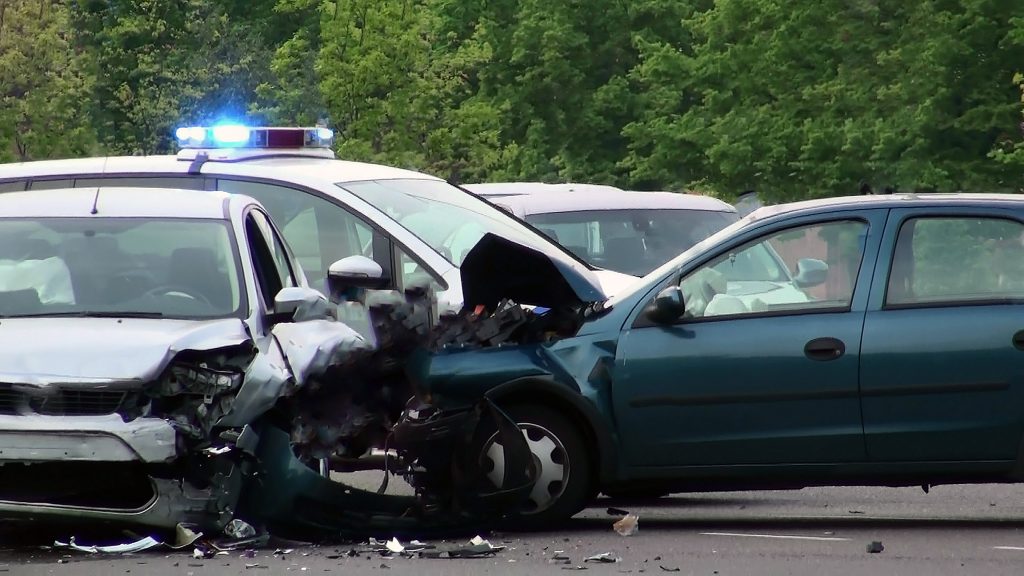Understanding what constitutes “discovery” under the Arizona auto accident statute of limitations is crucial for individuals seeking compensation following a motor vehicle collision. In Arizona, personal injury claims, including auto accident cases, are strictly governed by statutory deadlines. These limitations not only affect the timing of legal action but also determine whether a case is even eligible to proceed in court. The concept of “discovery” is especially important, as it can impact when the clock starts ticking on a claim.
How the Arizona Auto Accident Statute of Limitations Functions
The Arizona auto accident statute of limitations sets the timeframe within which a party must file a lawsuit after a car accident. In general, Arizona law provides two years from the date of the accident to initiate legal proceedings. However, this rule can be influenced by when the injury or damage was actually “discovered.” In legal contexts, this is referred to as the “discovery rule,” and it serves as an exception to the standard two-year period.
Discovery Rule and Its Application in Arizona Injury Cases
In Arizona, the discovery rule permits the statute of limitations to commence not on the actual date of the accident, but on the date when the injured party knew or reasonably should have known that an injury occurred and was caused by the incident. This provision ensures that individuals are not penalized for injuries that are latent or initially undetectable. In practice, the courts evaluate both the subjective knowledge of the claimant and whether a reasonable person in similar circumstances would have identified the harm.
Identifying the Moment of Discovery in Auto Accident Claims
Pinpointing the moment of “discovery” requires evaluating specific case details. For example, an individual may walk away from a crash seemingly unharmed, only to develop spinal issues weeks later. If a physician later confirms the condition was caused by the accident, that diagnosis could mark the discovery date. Courts often assess medical reports, expert evaluations, and the timeline of symptom progression to determine when the statute began.

Judicial Interpretation of Discovery Under Arizona Law
Arizona courts have applied the discovery rule in various personal injury rulings, frequently emphasizing a balance between fairness to the claimant and the need to prevent indefinite liability for defendants. In Doe v. Roe, 191 Ariz. 313 (1998), the Arizona Supreme Court clarified that actual knowledge of the full extent of injury is not required—awareness of some injury and its likely cause may be sufficient to trigger the limitations period.
When the Two-Year Clock Might Be Tolled
Although the Arizona auto accident statute of limitations usually begins on the date of the incident or discovery, tolling may apply in limited scenarios. For example, if the injured party is a minor or declared mentally incapacitated, the statutory period may be paused until legal capacity is restored. Additionally, if the at-fault driver leaves the state, the limitations period may also be tolled.
Discovery in Relation to Property Damage Claims
It’s important to distinguish personal injury claims from property damage claims under Arizona law. While both generally follow a two-year deadline, property damage might be “discovered” at a different time—such as when structural damage to a vehicle or other property is identified after initial repairs. This separation affects how discovery is interpreted, and thus how the Arizona auto accident statute of limitations applies.
Role of Medical Records in Establishing Discovery Date
Medical documentation plays a pivotal role in defining when a claimant became aware of accident-related injuries. Diagnostic tests, physician notes, and treatment timelines help demonstrate when an individual had sufficient information to connect their injuries to the crash. Courts often review this evidence when deciding if a claim filed beyond two years is still timely under the discovery rule.
The Burden of Proof in Late-Filed Auto Accident Claims
If a lawsuit is initiated after the two-year mark, the burden shifts to the plaintiff to prove that the delayed filing is justified under the discovery doctrine. They must offer credible evidence that they were unaware—and could not reasonably have been aware—of their injury within the standard limitation period. This legal threshold must be met to avoid outright dismissal.

How Comparative Fault Interacts with the Statute of Limitations
Arizona follows a pure comparative fault system, which allows injured parties to recover damages even if they are partially at fault. However, comparative fault does not extend or delay the Arizona auto accident statute of limitations. The timeline still applies regardless of how liability is apportioned, unless a valid discovery-related extension is demonstrated.
The Statute of Limitations in Wrongful Death Cases Involving Auto Accidents
In cases where an individual dies due to accident-related injuries, the two-year window typically begins on the date of death, not the date of the crash. The discovery rule may still apply if the cause of death was not immediately apparent. This nuance impacts how long surviving family members have to initiate wrongful death litigation tied to a motor vehicle incident.
Filing Deadlines When Government Entities Are Involved
Claims against public agencies, such as municipal employees or state vehicles, invoke a shorter timeline under Arizona’s Notice of Claim statute. A written claim must be submitted within 180 days of the incident or its discovery. This strict deadline runs concurrently with the broader statute of limitations and must be satisfied to maintain eligibility. The Arizona Judicial Branch outlines procedural rules for such filings.
Legal Precedents Affecting Discovery Interpretation
Arizona appellate courts have provided critical guidance on how discovery is to be understood in accident cases. In Little v. State, 225 Ariz. 466 (Ct. App. 2010), the court upheld that delays in symptom recognition do not necessarily toll the statute unless the plaintiff can show a causal link was not reasonably identifiable. This precedent underscores the importance of early diagnosis and documentation.
Insurance Notifications Do Not Reset the Statutory Period
Some individuals mistakenly believe that notifying an insurance carrier tolls or resets the statutory period. However, reporting a claim or negotiating with insurers has no effect on the legal deadline. The Arizona auto accident statute of limitations is a judicial rule, not contingent on insurance timelines.
Practical Implications of the Discovery Rule in Arizona
The practical impact of the discovery rule lies in its ability to protect injured individuals who encounter delays in symptom onset or diagnosis. However, its application requires careful legal and factual analysis. Misunderstanding this rule can result in filing outside the permitted period, causing claims to be barred regardless of merit.
How Discovery Affects Settlements and Litigation Strategy
Understanding when the statute begins can influence both negotiation and litigation strategies. If discovery is delayed, plaintiffs may have additional time to build a case or explore settlement. Conversely, defendants may argue that the discovery date occurred earlier than claimed, seeking dismissal on limitations grounds. Legal positioning often hinges on how persuasively the discovery timeline is presented.

Documenting Discovery as a Protective Measure
From a procedural standpoint, documenting injury awareness, medical appointments, and conversations with professionals can help establish a defensible discovery date. Keeping detailed records is essential, particularly in cases where the Arizona auto accident statute of limitations is in question due to delayed injury identification.
Connecting Discovery to Legal Timeliness
Ultimately, the concept of discovery is a gateway to preserving or jeopardizing one’s right to pursue damages. Knowing when and how the statute begins ensures that legal action is not compromised by technical missteps. Timing is a foundational element of legal success in accident-related claims.
Situational Examples Where Discovery Impacts Filing Eligibility
Various real-world situations demonstrate how discovery determines claim viability. A pedestrian struck in a hit-and-run may not identify the at-fault party until surveillance footage is recovered weeks later. In such cases, the statute may be deemed to start from that discovery point. Similarly, latent brain trauma may only be diagnosed months after an accident, extending the deadline accordingly.
Legal Support for Timing Questions
Individuals uncertain about how the statute applies in their case must base decisions on accurate, jurisdiction-specific information. A thorough breakdown of filing timelines and eligibility is available through this resource on how long to file an auto accident claim in Arizona, which discusses statutory requirements in detail.
Conclusion: Time Is Critical Under the Arizona Auto Accident Statute of Limitations
Determining what counts as “discovery” is not merely a technical detail—it can define whether a claim is permitted or barred under the Arizona auto accident statute of limitations. While the general rule imposes a two-year filing deadline, the discovery rule introduces critical flexibility in cases where injuries or their causes are not immediately known. The statutory clock does not wait, and a precise understanding of discovery ensures compliance with legal deadlines that are strictly enforced.
